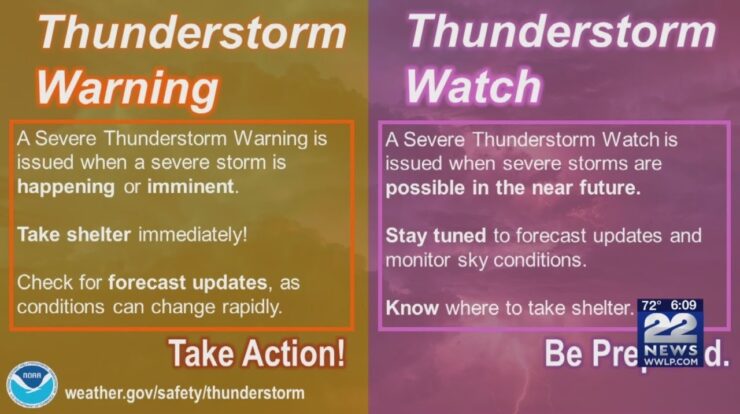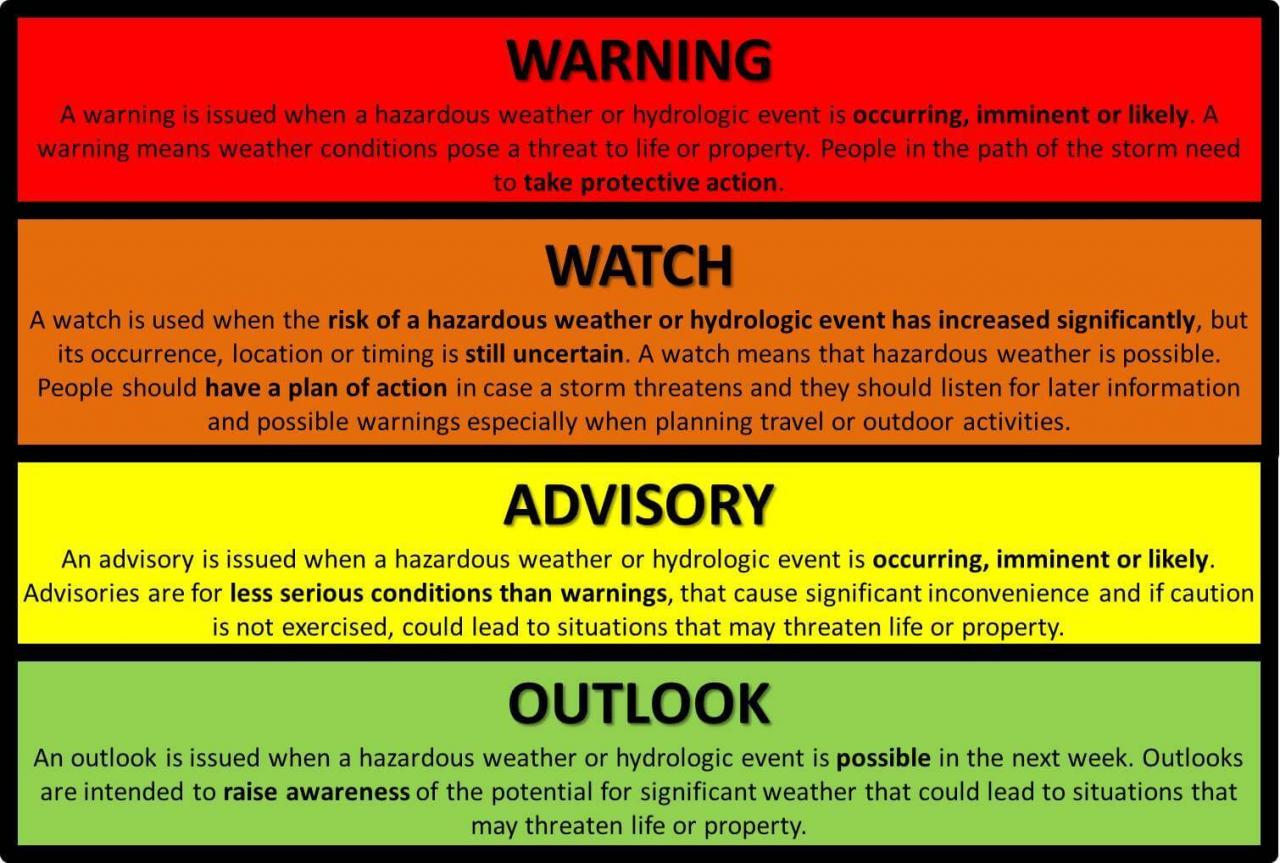
Is a watch or warning worse – When it comes to severe weather, knowing the difference between a watch and a warning can mean the difference between life and death. A watch means that conditions are favorable for a particular type of severe weather to develop, while a warning means that the severe weather is already happening or is imminent.
In this article, we will explore the differences between a watch and a warning, discuss the potential impact and consequences of each, and provide tips on how to stay safe when severe weather strikes.
Severity and Urgency: Is A Watch Or Warning Worse
A watch is issued when there is a potential for severe weather within 48 hours. A warning is issued when severe weather is imminent or already occurring.
Watches are typically issued when there is a risk of severe thunderstorms, tornadoes, hurricanes, or other hazardous weather conditions. Warnings are issued when there is a high probability of severe weather occurring within the next few hours.
If you’re eager to catch the latest bare-knuckle boxing action, be sure to check out how to watch BKFC . For those interested in the political scene, tune in to the White House Correspondents’ Dinner watch . If you’re a fan of historical dramas, don’t miss how to watch Oppenheimer .
Level of Urgency
The level of urgency associated with a watch or warning varies depending on the severity of the potential weather hazard. Watches are generally less urgent than warnings, but they should still be taken seriously.
When a warning is issued, it is important to take immediate action to protect yourself and your property. This may involve taking shelter in a safe place, evacuating the area, or following other instructions from local authorities.
Impact and Consequences
Severe weather can have a significant impact on individuals, communities, and organizations. Watches and warnings can help to mitigate these impacts by providing advance notice of potential hazards.
To stay informed about weather conditions, it’s crucial to understand the difference between a watch and a warning . And if you’re looking for a fun way to enjoy movies and shows with friends, check out the Amazon Watch Party feature.
Watches can give people time to prepare for severe weather by gathering supplies, making evacuation plans, and securing their property. Warnings can give people time to take immediate action to protect themselves from harm.
Get ready for some thrilling action with BKFC! Check out how to watch BKFC and witness the intense fights firsthand. Don’t miss the star-studded White House Correspondents Dinner Watch , where laughter and politics collide. Dive into the world of theoretical physics with how to watch Oppenheimer , a captivating film about the enigmatic scientist.
Stay informed about weather alerts by understanding the difference between watch and warning . Finally, gather your friends and host an unforgettable Amazon Watch Party for a night of entertainment and connection.
Historical Examples, Is a watch or warning worse
There are many examples of watches and warnings playing a significant role in saving lives and property. For example, in 2017, the National Weather Service issued a warning for Hurricane Harvey, which gave people time to evacuate the area and prepare for the storm.
Another example is the 2011 tornado outbreak in Alabama, which killed 253 people. The National Weather Service had issued a warning for the tornadoes, but many people did not have time to take shelter.
Communication and Dissemination
Watches and warnings are communicated to the public through a variety of channels, including television, radio, social media, and mobile apps.
It is important for people to have multiple ways to receive watches and warnings, so that they can stay informed about potential hazards.
Best Practices
There are a number of best practices for communicating watches and warnings to the public.
- Use clear and concise language.
- Provide specific instructions on what people should do to stay safe.
- Disseminate watches and warnings through multiple channels.
- Repeat watches and warnings frequently.
Preparedness and Response

Individuals and organizations should have a plan in place for how to respond to watches and warnings.
This plan should include:
- A list of safe places to go in the event of severe weather.
- A way to contact family and friends in the event of an emergency.
- A supply of food and water.
- A first-aid kit.
Successful Examples
There are many examples of successful preparedness and response measures to watches and warnings.
For example, in 2012, the city of New York implemented a new warning system for hurricanes. This system helped to save lives and property during Hurricane Sandy.
Another example is the 2011 tornado outbreak in Alabama. Many people were able to take shelter in time, thanks to the warnings issued by the National Weather Service.
Closing Summary

Watches and warnings are essential tools for staying safe during severe weather. By understanding the difference between the two and taking appropriate action when either is issued, you can help to protect yourself and your loved ones.
Expert Answers
What is the difference between a watch and a warning?
A watch means that conditions are favorable for a particular type of severe weather to develop, while a warning means that the severe weather is already happening or is imminent.
What should I do if a watch is issued for my area?
If a watch is issued for your area, you should be prepared to take action if the weather conditions worsen. This may include moving to a safe location, securing loose objects, and having an evacuation plan in place.
What should I do if a warning is issued for my area?
If a warning is issued for your area, you should take immediate action to protect yourself and your loved ones. This may include seeking shelter in a sturdy building, staying away from windows, and avoiding driving.





